
‘Bruce Conner (1933–2008) was a film artist who changed the game with his first movie, titled A Movie (1958). Every image in this 12-minute assemblage, except the title card (“A Movie by Bruce Conner”) is secondhand—drawn from newsreels, travelogues, stag films, and academy leaders. Premiered at a San Francisco gallery as part of the sculptor’s first one-man show, Conner’s Movie was a true film object—as well as a self-reflexive exercise in academic montage, a joke on the power of background music (in this case, Respighi’s sprightly “Pines of Rome”), a high-concept/low-rent disaster film and a pop art masterpiece.
‘A Movie is canonical, and the rest of Conner’s oeuvre holds up as well. The five-minute Cosmic Ray (1961), a frantic found-footage-plus-gyrating-naked-chick montage set to Ray Charles’s “What’d I Say,” was the original underground blockbuster—an anticipation of the MTV aesthetic that established Conner as the poet of sexual frenzy. There’s: Vivian (1964), a kinetic portrait set to Conway Twitty’s “Mona Lisa”; the go-go structural striptease Breakaway (1965), with dancer Toni Basil; and a hypnotic exercise in recycling recycled footage, Marilyn Times Five (1968–73), with Marilyn Monroe. Conner’s other name stars included JFK, the subject of Report (1963–67), and the Atomic Bomb, as featured in his longest and most majestic film, the 36-minute Crossroads (1976).
‘Having more or less invented the music video, Conner produced some stellar examples, fashioning short collage films around Devo’s Mongoloid (1978) and two David Byrne–Brian Eno compositions, Mea Culpa (1981) and America Is Waiting (1981); he also edited found footage to more lyrical ends, notably in 5:10 to Dreamland (1976) and Valse Triste (1978). In the latter, images evocative of Conner’s Kansas boyhood are sepia-tinted, linked within a series of slow dissolves and, mixed with ghostly bird calls and rumbling thunder, set to the theme from the radio show I Love a Mystery. The powerful sense of imminence evokes both a fading personal memory and an entire world on the brink of obliteration.
‘Conner made several (relatively) conventional documentaries—The White Rose (1967), on painter Jay De Feo’s legendary canvas, and His Eye Is on the Sparrow (2006), interviewing two veteran gospel performers—as well as a few ecstatic hippie home movies. The lush, joyously pixilated Looking for Mushrooms (1959–1967) is often seen in its 1996 version, which substitutes a spacey Terry Riley composition for the Beatles’ avant-pop “Tomorrow Never Knows.” Also scored by Riley (but performed by the Shanghai Film Orchestra), Conner’s final film, Easter Morning (2008), digitalizes 1966 8mm footage to marvelous effect. Close-ups of flowers and foliage, burning candles, a nude, the San Francisco skyline are transformed into grainy rhythmic smears of reflected and refracted light. Trippy as it is, Conner’s last movie has the same subject as his first—the phenomenon of motion pictures.’ — J. Hoberman
____
Stills
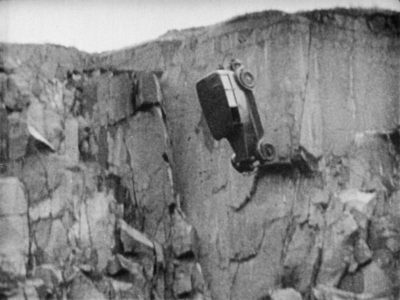


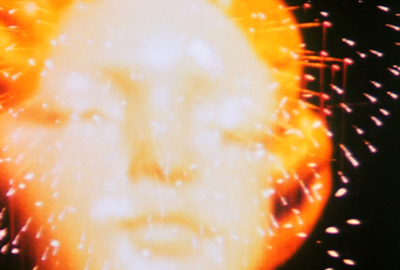





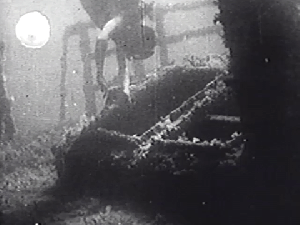
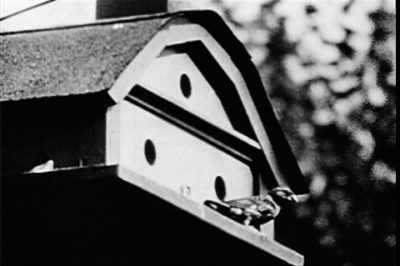

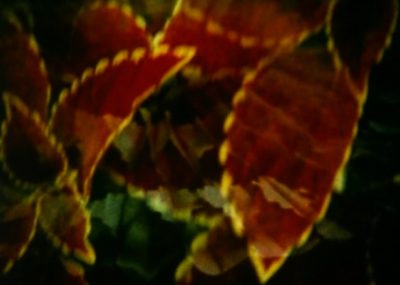
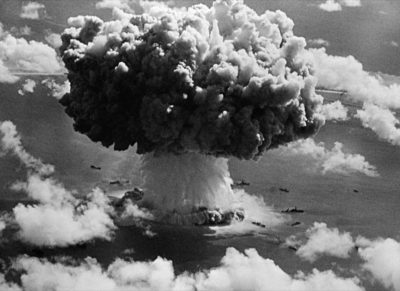
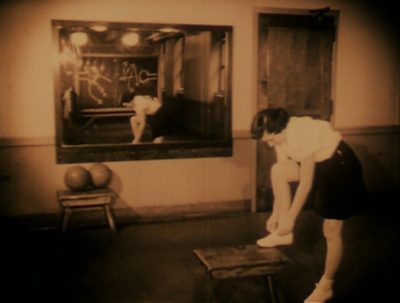
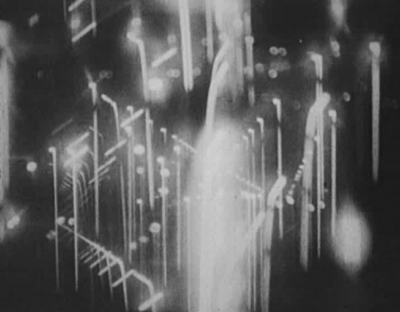
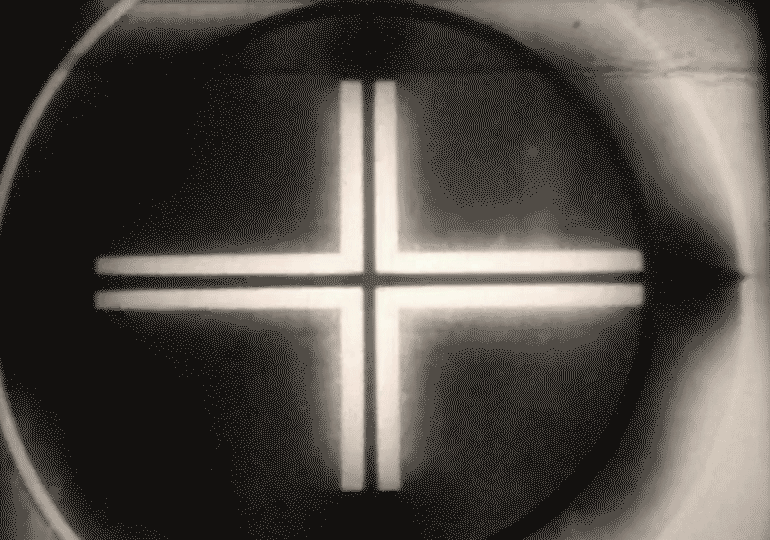
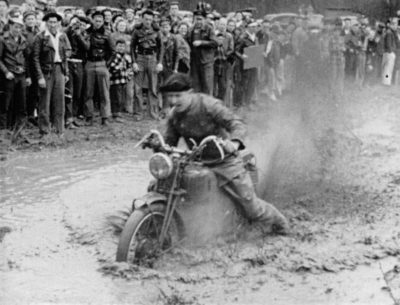


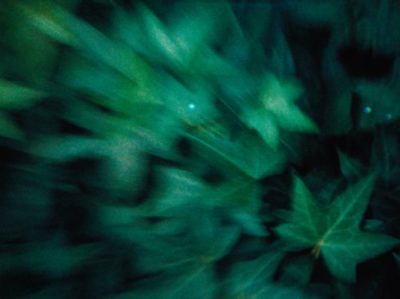
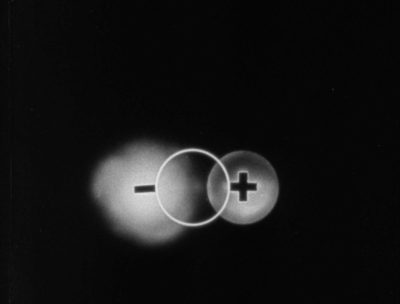




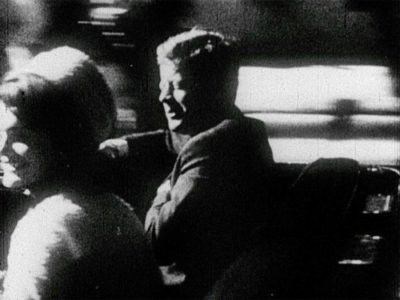

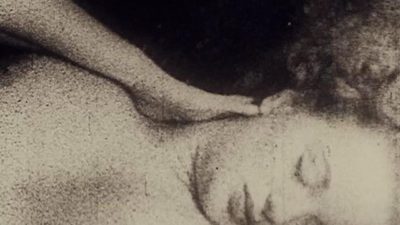

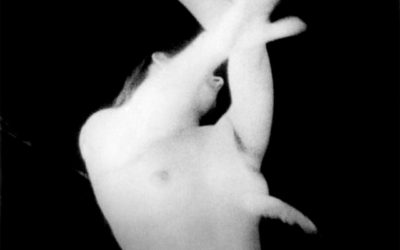
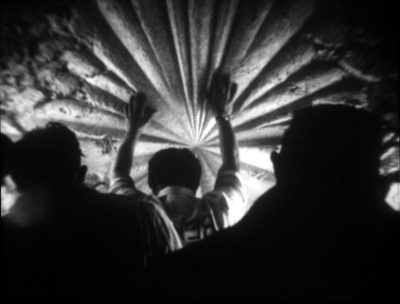
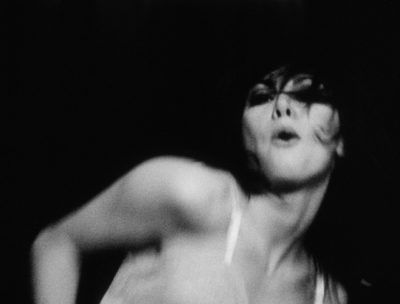

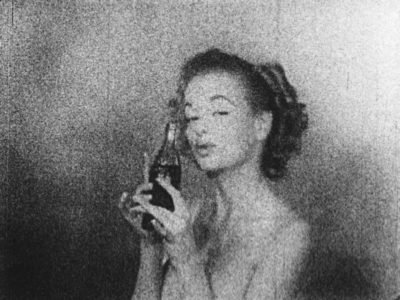
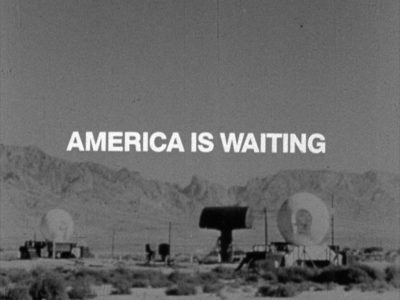


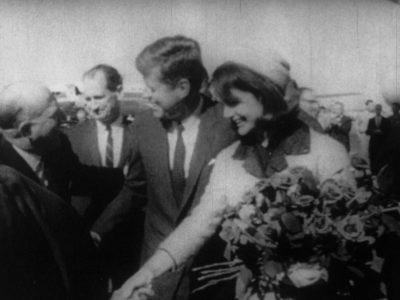
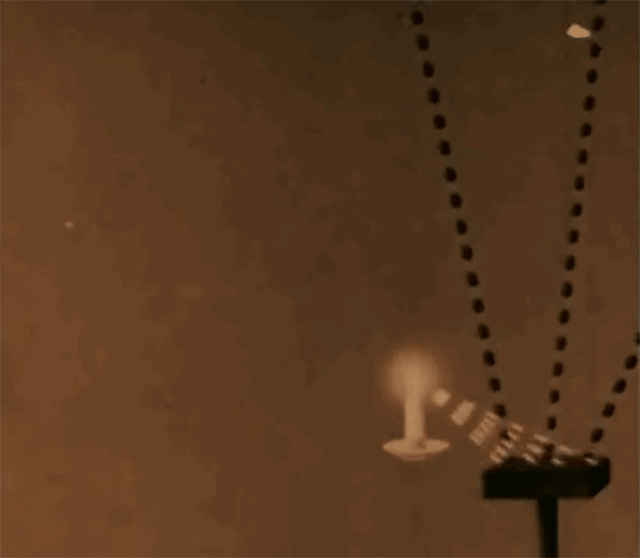

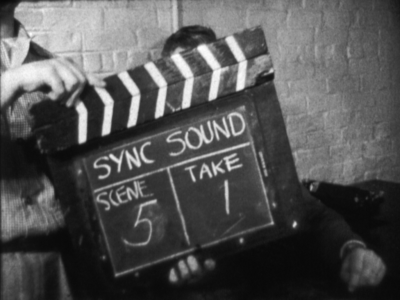

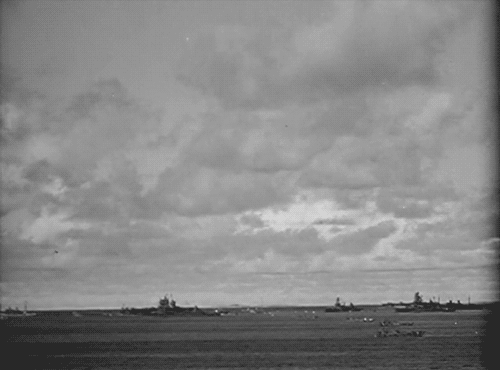




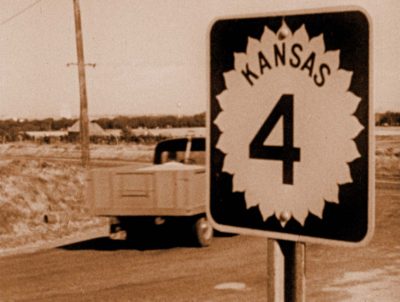

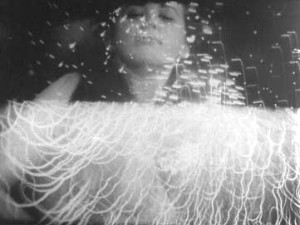
_____
Further
Bruce Conner @ IMDb
Countercultural Icon and “Father of the Music Video” Bruce Conner Gets His Due
Bruce Conner @ Kohn Gallery
Bruce Conner: The Art of Montage
BRUCE CONNER: FOREVER AND EVER
Book: ‘Bruce Conner: It’s All True’
No Truth: Bruce Conner
The Creepy World of Bruce Conner
Book: ‘Looking for Bruce Conner’
PLEASE ENJOY AND RETURN: BRUCE CONNER FILMS FROM THE SIXTIES
SHINE A LIGHT: THE ART OF BRUCE CONNER
Book: ‘Bruce Conner: The Afternoon Interviews’
Fallout – Some Notes on the Films of Bruce Conner
Apocalypse Now: MoMA’s Bruce Conner Show Is Mind-Blowingly Good
Oral history interview with Bruce Conner, 1974 August 12
L’art bâtard de Bruce Conner : de l’assemblage au cinéma de démontage
Bruce Conner, the Last Magician of the 20th Century
Bruce Conner’s “Out of Body”
“Worthwhile Insanity”: An Interview with Bruce Conner
Exploded View: Bruce Conner’s Crossroads
Meet Bruce Conner, Film-Maker
End Notes: Bruce Conner, 1933-2008
An Artist Who Possessed a Third Eye
The Legacy of Bruce Conner
Keeping Up with Conner
Rat Bastard: On Bruce Conner
Bruce Conner’s Crusade of Reinvention
BRUCE CONNER: THE ARTIST WHO SHAPED OUR WORLD
The convulsive lyricism of Bruce Conner
____
Extras
BRUCE CONNER: IT’S ALL TRUE, a symposium
Bruce Conner. Es todo cierto
____
Interview
from Reversal
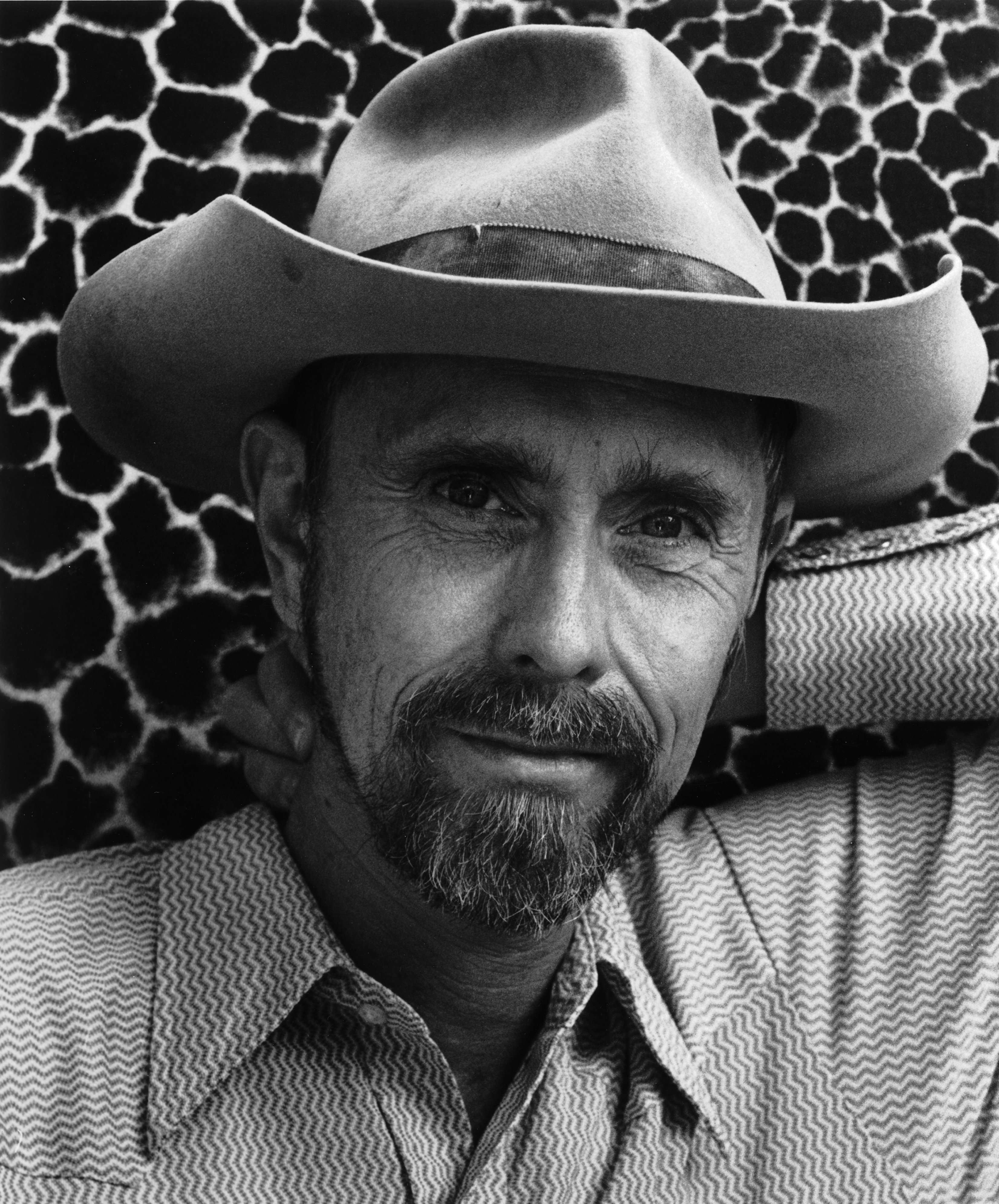
Kayhan Ghodsi: What is the American “New Wave” in film? Do you think it really exists, or has it always been a myth? If it does exist, what distinguished it from other movements and schools in the history of filmmaking?
Bruce Conner: [Laughs] Well, you already said it all. What else can I say? People have been talking about “American New Wave,” patterning that phrase I assume after the French New Wave. And it was a popular phrase to use. I don’t know exactly what it means, where it applies to something in the last ten years, or before that. There seems to be a political thing that happened particularly in the sixties which was the New York Film Co-Op and Film Culture magazine. And very little of what was going on outside of New York was reflected there. My experience and the information I gathered from other people was that Film Culture magazine many times reflected more on who were the social lions of the New York film scene or who was a close friend of someone who was within this structure, this hierarchy, who had more or less self-appointed themselves as the spokesmen for filmmaking. I know, from my witnessing of Andy Warhol’s work in the art galleries and how he managed to manipulate the political structures and exploit concepts that had been around for some time. His way of advertising himself, since he did come out of the advertising business. I made a prediction to myself and a couple of friends that in a very short time he would probably dominate and take over the whole thing. Which he did in a certain respect. But New Wave at this time, I can’t even think that there’s anything called New Wave.
KG: OK, but at some point you were talking about the self-appointed new filmmakers. What was new about their work?
BC: On the large part I don’t think anything was really new. It’s just that a number of people were developing personal filmmaking in the United States. As opposed to, say, what was happening in the 1940s and 1950s, where you could really count on the fingers of two hands ten people who were acting out seriously the role of a personal film artist—dealing with images or symbols or filmic structures [that] were mostly personal or of a personal point of view. I think that what happened was, in any kind of situation where there’s a social phenomenon that might reflect economic or social power, there are always those individuals who will come in and pull it together and form it into a structure. It’s usually a structure, which reflects itself rather than the individuals. Because inevitably it becomes a power structure, political structure, economic structure, a self-protection structure. I think that kind of situation has gone on through the years. What happened in the 1970s was that this direction became even more solidified and academicized. The schools and colleges started taking over the turning it into an industry to placate and satisfy the fantasies of students who wanted to play at being movie-makers. They monopolized all of the funding through federal organizations and film societies and festivals. It became a monolith, and it was no fun anymore.
KG: So you don’t call it “new.” You don’t see anything different. But at one time it was different from other films. What was the difference?
BC: I’m talking about the artistry of filmmaking of the films I value myself. The economic level of the people who had interest in movies rose to the point where they could invest their time and money into what was basically a rich man’s art form. That, I think, was the basic change. You had more people with the opportunity and freedom to work and ignore the economic restrictions that are put onto moneymaking movies.
KG: OK, that’s the filmmaking side. What’s on the screen? What is different? Is it form or is it content? That’s what I want to know.
BC: Well, you can always see different form and content there because you have a multitude of different points of view. But if you are asking me if there is a form, a content, I don’t see that there is. I don’t see something that you can say is an overview.
KG: So what was the difference? Just the filmmaker? For an example: You and I don’t have billions of dollars we can go and buy a studio with. But suddenly because of the economic situation we are able to go and make these 24-frames-per-second things. What about these things that people made? What was different about them? I mean, was it like resentment of a kind of content? Or was it no-content film, or just a change of form?
BC: Well, I think you are asking me for an historical overview.
KG: I only want to know your point of view.
BC: I initially saw a world of “look-seeing” films, which would expand and change in a multitude of dimensions. Way out of format in the lengths of the films, the kind of images that would be presented, the character of the viewing place—films that could be used in unique situations. Films that became events in themselves, that were no longer a part of what you’d say was a continuing history of theatrical films and proscenium art. I was hoping and dreaming of a situation [that] would revolutionize the whole way that people would see movies and how they would relate to them. The enormous variety of points of view is vastly entertaining and [an] illuminating process. For me, I always thought of it as a big celebration that would change many things. The big celebration was gathering all these people together, but now it appears that everything is moving off into individual, isolated pockets of people making movies. They don’t communicate with each other. They become economically involved in producing sponsored films and other things. It became like an institutional national park financed by the government. Scholarly study [that] is rammed down people’s throats.
KG: It was your dream to see it as a celebration. Do you feel it didn’t happen like this? Like it was a huge, nice-looking castle that, after it was built, no one wanted to live in it anymore?
BC: Well, I don’t know if it ever got built that way. As all of these people were gathering together, I was seeing people who I felt were intent on revolutionizing the way people see, changing the way that people relate to each other—in other words, becoming a radical point of view and/or a revolutionary point of view. At the base was a fundamental, radical alteration of the economic and social character of the United States!
KG: Another historical question: Which group of people started, let’s keep calling it New Wave, in the Bay Area? What do you think they brought to the audience when they asked people to stop watching Hollywood films and come to their little movie theaters and watch their 16mm films? What did they bring to the audience?
BC: Well, first of all, I don’t think there are too many people who would say, “Stop going to the movies.”
KG: Well, not stop. What I mean is they brought something new and said, “Come and watch.”
BC: I can just think of the people I knew, that were so involved in images that had grown out of their personal experience. Whether they were people who previously had worked in poetry, painting, theatre, whatever, they started to find that working in film created possibilities of images and changes that did not exist before.
KG: Was it only form-wise?
BC: When I came out here in the 1950s, James Broughton had sort of stopped making movies. So had Sidney Peterson and a number of other people who had shown at the San Francisco Museum of Art. I think the 1950s had more or less hit a level where there were not a lot of films being produced. It was mostly because of a series of programs that had shown at the Museum of Modern Art. This was the first time anyone had put on a series of films like the Cinematheque, a survey of surrealist and independent films in the United States that caused a resurgence of filmmaking. James Broughton and the Whitney brothers and other people were a part of that. When I first came to San Francisco, that didn’t exist. There wasn’t a single film society in the whole of the Bay Area. Nobody was showing event silent movies, except that the San Francisco Museum was still showing some of the standard museum-of-modern-art movies once a month with an audience of four or five people. I had already started a group at the University of Colorado called the Experimental Cinema Group in 1957, which had like four hundred members. We showed [Stan] Brakhage’s films, Kenneth Anger’s films, Buster Keaton, Olympiad, Blood of the Beast. All kinds of films that I was fascinated to see, and the only way to see these movies in San Francisco was to start a film society. It was called Camera Obscura, and it was the only film society in the area. I was totally obsessed with movies at that time. We were able to put together film programs and also gather people from this area that we knew of. Now, at that time you could still say there were only seven or eight people you could consider to be someone worth putting on a show in this area. That was Larry Jordan, James Broughton, Jordan Belson, and a guy [Christopher Maclaine] who did a movie called The End. I had not made my first movie yet. But I started working on the concept of my first movie, A MOVIE. I lived here until 1961-62, and anyone who was doing film at that time I knew. That was the middle of the beatnik era. There wasn’t much filmmaking going on. It was mostly poetry and jazz. It had a lot to do with drugs, and a lifestyle [that] was totally different from the mainstream. At that time, a lifestyle even slightly different than the mainstream put you into a category of eccentric. And generally that category was either you were queer, you were crazy, or you were a communist.
When I moved back in ’65, I discovered Bruce Baillie and some other people were making films. Then the Canyon Cinema organization came up in the ’60s as a cooperative venture, where many people were working to gather all these films together in an uncritical structure; any film that came in could be distributed. In the later 1960s there were a lot of new and interesting things coming together, and there was lots of communication between people on the East Coast and the West Coast. The phenomenon [that] was happening with the new psychedelic community was in a way comparable to the phenomenon that happened ten years before with the beat. It became notorious, a national phenomenon, and it happened in San Francisco and grew out of a natural community of artists and individuals who were involved in many different ways of expanding the way you view the world, your consciousness, and how you might be able to alter the world around you. Canyon Cinema programs were happening every week, and many times it would be jam-packed to the rafters. Then, sometime in the 1970s, when more and more people were producing movies, it seemed like there were fewer and fewer individuals there. I would witness a film festival put on by the San Francisco Museum of Modern Art. They would put together a jury of people who were uneducated in filmmaking and they would throw out the films of James Broughton, of Robert Nelson, and they would give first prize to someone who had taken a little bit of James Broughton, of Robert Nelson, a little bit of Bruce Conner, and a little of bit of someone else and packed it all into one movie and knocked over this naive audience, who had put itself in charge of promoting independent filmmaking. Homogenizing, not a commercial product that was part of a new industry of grantsmenships and teaching. And many of these people who were so adventurous before became entrenched in that and became the academy.
KG: Let’s stop with the history. What is the position of the artist? What is his function? What is his impact today?
BC: It’s hard for me to judge that, not only in filmmaking but in general. The role of the artist has been homogenized and mixed up with handicrafts and the concept that everyone is an artist. Like the San Francisco Museum of Modern Art could care less really what they put into their museum. They have to change the show once every month or every two months just like Macy’s does. To bring in the crowds. I think the artist has become more of a commodity than ever before. I also feel that the environment that the artist is in, whether it be filmmaking or otherwise, their potentials are blunted by the very organizations they depend on!
My general position as an artist today is just not take part in a lot of it. I do not see anything new at this time. I am seeing what I see as overall patterns that I have seen repeated over my lifetime. And of course one of the basic patterns is the structure that you find politically and economically in the arts and any other kind of structure—of a burgeoning growth and then a kind of frozen solidification. Most people when they grow old become that way. They build a case around them and they can’t think of anything except what’s in the past. Most of my battle in recent years is to get out of the past. To not talk about it like I am now.
KG: That’s exactly what I wanted to talk about with this question: What is the impact and the function of artists living in this society right now?
BC: All I can say is that it is defined by each person. They define it themselves for themselves. I can’t say what the role of the artist in this society is. I think that as soon as I start defining things like that I’m going to be faced with myself rejecting that and not respecting it myself. Every time anybody, including myself, makes a definition like that I mistrust it. Because all it does is limit you. Art is one of those three-letter words that we have in English that like other three-letter words causes a great deal of misunderstanding and emotional involvement. Art, God, and sex. It’s sort of like an institutional national park.
KG: You have to admit that there is something different with this three-letter word.
BC: One of the things that I found is that there is a very structured and formalized national park system. You are allowed to be involved with whatever that concept of God is, and it’s part of the social structure, and the same thing with art. If it’s in this package and doesn’t hurt anything, doesn’t really change anything, then it’s called art.
KG: And if it does?
BC: And if it does then it’s insurrection and acts against the values that are in the society and it becomes defined otherwise.
BC: My concept initially was that I wanted to change the way people saw things, because I felt that I saw the world totally differently. That most people I knew were bullied and badgered into not acknowledging what it was that they saw, and the real things happening in front of them. They could just as well be blind, because by not acknowledging it, it didn’t exist.
KG: So you saw it as one of your functions to show them that?
BC: Well, one of my functions, if I was going to call myself an artist, was to try to alter or change the whole concept of what this art structure was—to subvert and alter the art museum and the concept by which art becomes an economic commodity. I kept on trying to push that environment out of the museum, out of the frame. I’ve discovered that I’ve not really changed that structure, and that that structure is now even stronger than it was before. Now, there is basically a corporate structure that has a great deal of influence on the shape of these arts organizations. If anything has any value as a work of art it should not make any difference whose name or ego is on it. My feeling was that if this thing that you make is so much a part of yourself, it should easily be recognizable without you turning it into a billboard.
KG: So do you mean that your next film is not going to have your name at the end of it?
BC: Oh, no; it’s all over the place now. In 1963-64, when I had an exhibition at the University of Chicago, I was taking down the show, packing it up to take back to Massachusetts, when a couple was just coming in to see my show because a friend of theirs was named Bruce Conner. And after I got back to Massachusetts, I got a news clipping from somebody in Lincoln, Nebraska, about somebody named Bruce Conner. So I decided that there were a lot of me all over the world! I went to the public library in Boston, looking through all the telephone directories for every state in the Union, looking up Bruce Conner. And I gathered at least a dozen of them before I stopped. My plan was to have a convention! And everyone would have name tags saying, “Hello, my name is Bruce Conner.” There would be a program of events: welcome to the delegates would be presented by Bruce Conner, who would then introduce the master of ceremonies, Bruce Conner, who would then introduce the main speaker, Bruce Conner!
But I still think it’s ludicrous. Ludicrous that some object that I have made has some value just because of some economic foolishness in the art world. So this movie, yes, my name will be on it.
KG: Where does the audience stand right now? Is the filmmaker responsible to the audience?
BC: Only if the audience makes him responsible. Or if the filmmaker thinks he’s responsible to the audience. They create their own images of each other, and the responsibilities that they expect from each other are whatever they created. It’s just as much a fantasy as the images that are real or unreal, that you identify on a movie screen. These are roles that keep fluctuating and changing all the time. I always see it as the audience and the filmmaker being balanced. One of them fills ups with a little more hot air than the other one, so they look bigger. But neither of them can exist without the other. The situation of putting them in the darkened auditorium, where you are basically sensorially deprived of sounds and images, and sitting and looking in one direction is such a great monopoly on people’s minds and bodies that it’s a unique way of dealing with an artist’s artistic audience.
KG: That’s exactly why I asked you this question. Because when people decide to be your audience, they decide to give you this monopoly. They decide to come and sit in the darkness and let you do something to them. Doesn’t that make the filmmaker responsible?
BC: If you have such a moral point of view and such a conscience, yes. I don’t feel that many of the situations where films are shown today show that conscience of that value.
KG: Well, I remember the night you had your show at the Castro. The last thing you said, which was about your film CROSSROADS, was that if you (the audience) don’t like this movie, if you get bored or whatever, please leave quietly. And you were saying that to someone like myself who came some distance, had to spend 45 minutes finding a parking place, had to spend $3.00, which is like a half hour of work somewhere, and had to sit and hear you tell me that if I get bored I should leave quietly. What is the relationship between the filmmaker and the audience?
BC: I think what I was saying was, “Don’t feel compelled to torture yourself by watching something you don’t want to watch.”
KG: Well, that people know already. But in a way, you were asking people to leave quietly and not stand up and protest or something. How is it that you ask some people to come spend time, money, and effort to see your work, and then you treat them like that?
BC: I think that it’s my attitude toward filmmaking. I feel that going to movies is just not that important. If you feel it’s so important, and you dedicate yourself so much to doing that, if you can’t just walk out of it like that, then I think you have a real problem.
KG: I’m asking this question to the filmmaker, and you’re answering me as the audience.
BC: No. But I can’t remember what I said. You tell me what you saw as an audience. What you said doesn’t seem to me what I remember my intent was or how I said it. And I can’t say exactly what I did say.
KG: I want to know what you think of the audience. What’s your attitude? Who do you think the audience is?
BC: I can never separate the audience from the film. The process is that I’m the audience all the time, and that I am involving other people into it. And part of the reason I’m involving other people into it is because this process I’m discovering is enhanced and develops itself into another dimension because people start telling me what I did. It’s certainly not like the movie makers who must preview their films and figure out where the big laugh is going to come, and then keep packaging it down so that you can expect the same laugh throughout the movie.
KG: Well, that’s their method of dealing with the audience. But when the new filmmaker decided he wanted to destroy that structure, he started disregarding the audience, too. It’s like you don’t want to make them laugh to sell more popcorn, so you just forget about them altogether.
BC: Well, you know what happened with the Cinematheque. It got to the place where somebody was running the films and almost having a private party, and speaking of it as, “I’m the curator,” and presenting things that are so serious and outside the experience of other people that they have to be subsidized as endangered species. I’m not quite sure what people are doing to their audience. The type of movies that are shown in those contexts have destroyed the audience. The people who presented the films and movies are not presenting them for an audience that is going to come time after time to see what’s happening, because they are abused and insulted and are not allowed to have a good time. They are not catered to in anyway whatsoever. That has never been my point of view.
At a certain point there were the people who were essentially very dull, uninteresting, uncreative people taking over control and direction of the way you saw independent films. And they are associated with universities and museums and film organizations. In those kinds of structures the people who are involved are not filmmakers or visual artists or performing artists at all! They’re the academics who happened to be teaching, say English, when there was going to be a film department. And they all fought tooth and nail to get that department under their control because it’s such a powerful tool.
Structuralists are the people who consider a good film one that you don’t see, but one that you write about. And the whole process of playing the verbal games is more important than the film. And they have gotten the upper hand, and they have destroyed an audience! The only audience they want is the one that is coerced by their textbooks and fills up their bank accounts with a regular salary and an honorarium for the rest of their lives!
___________
16 of Bruce Conner’s 26 films
___________
A Movie (1958)
‘Conner’s movie acts as a great leveler between various kinds of images: documentary versus staged, violent versus prosaic, frivolous versus serious. The film’s general arc is towards more and more devastating images, even as the soundtrack becomes bombastic and stirring, its epic grandeur clashing against the images of starving children, dead soldiers, and the distinctive mushroom cloud of the atomic bomb. Conner can be playful too, especially in his use of familiar cinematic devices in ways that confound expectations: he keeps flashing up the words “the end” at various points, and initiates a countdown towards the start of the film that’s interrupted by a striptease, as though he just couldn’t wait until the count was over to get into the film itself. But his best visual gag leads directly into his most horrifying image, as a shot of a pinup girl posing in a tiny bikini cuts to a submarine crew firing a phallic torpedo which, in turn, improbably sets off a nuclear explosion. The Freudian playfulness of the imagery is basically cut short, reminding viewers that despite psychological speculation to the contrary, a weapon is less a sexual symbol than a tool of grand destruction. The puffy, blossoming explosion of a mushroom cloud may make a clever metaphor for an orgasm, but it’s a metaphor with its own horrible realities attached.’ — Only the Cinema
______________
Cosmic Ray (1962)
‘Experimental artist Bruce Conner uses Ray Charles’ 1959 classic “What’d I Say” as a backdrop to his short film cut together from his home movies, war footage, and a cartoon. COSMIC RAY is about a lot of stuff: sex, violence, life, death, light, dark, and probably much, much more. An awesome example of a 60’s era DIY work, COSMIC RAY feels new despite looking really really old.’ — Facets Features

___________
Vivian (1965)
‘“A film portrait cut to the tune of Conway Twitty’s version of ‘Mona Lisa.’ Filmed in part at a 1964 show of Conner’s artwork in San Francisco, the film is also a witty statement about forces that take the life out of art. Vivian Kurz, the subject of the film, is entombed in a glass display case.” – Judd Chesler Award: Gold Medal Award, Sesta Biennale D’Arte Republica Di San Marino. Da Vinci thought he caught her smiling.’ — letterboxd
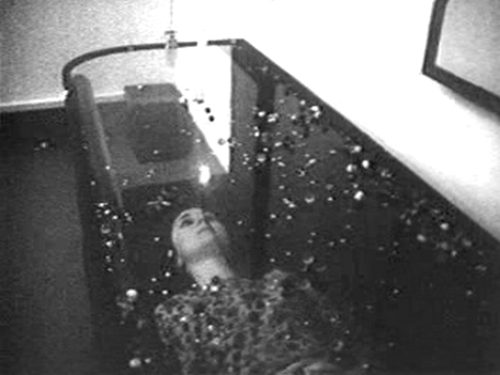
_____________
Ten Second Film (1965)
‘An application, made in 2004, created in homage to Bruce Conner. “Conner Times Ten” is an application that creates new images using Bruce Conner’s film “Ten Second Film” as its source. Conner’s “Ten Second Film”, which was made for the 1965 New York Film Festival but never shown during the festival because it was believed to be too “risky”, was made from ten film strips each 24 frames long. Using only multiples of 10 and 24 the application “Conner Times Ten” randomly chooses a frame from “Ten Second Film” and new images are made from this frame. These new images are never the same or repeated in the same sequence.’ — Matt Roberts
‘Conner Times Ten’ by Matt Roberts
______________
Easter Morning Raga (1966)
‘Easter Morning Raga was designed to be run forward or backward at any speed, or even in a loop to a background of sitar music.’ — The Guardian
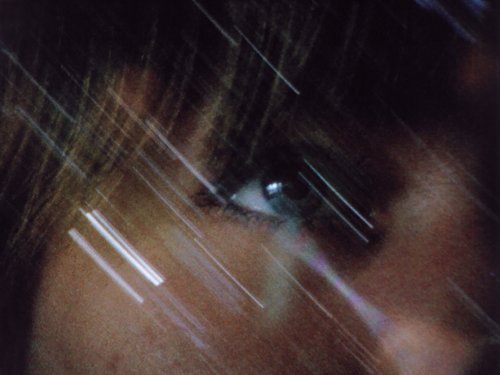
_______________
Breakaway (1966)
‘Shot by Conner on 16mm black-and-white film, BREAKAWAY surpassed in formal daring the majority of film work made at that time, and helped to define what would become the modern music video. Newly restored by Michelle Silva and the Conner Trust, BREAKAWAY is a dynamic five-minute homage to the female form, counterculture, pop music, and the kinetic possibility of cinema. Filming Toni Basil dancing and writhing frenetically to her song ‘Breakaway,’ with music by Ed Cobb, Conner’s camera moves around her in a kind of conjoined action, zooming in and out at dazzling speeds such that Basil seems to blur out of existence. Employing multiple frame rates, Conner fuses a sense of ephemeral evanescence in the figure with a sensual flickering of the celluloid. Rapid vibrations of dark and light as well as fast-cut film edits transform the image into a phantom of itself. In the film’s second half, everything is repeated backwards. As the song plays in a distorted reversed iteration, an abstracted mediation of film is brought to the fore.’ — Art Basel
Brief excerpt
Excerpts + discussion
______________
Report (1967)
‘Society thrives on violence, destruction, and death no matter how hard we try to hide it with immaculately clean offices, the worship of modern science, or the creation of instant martyrs. From the bullfight arena to the nuclear arena we clamor for the spectacle of destruction. The crucial link in REPORT is that JFK with his great PT 109 was just as much a part of the destruction game as anyone else. Losing is a big part of playing games.’ — David Mosen, Film Quarterly
Excerpt
_____________
Looking for Mushrooms (1967)
‘Departing from the stock footage that characterizes Bruce Conner’s earlier films, LOOKING FOR MUSHROOMS (1959–67/1996) is his first color film and consists of footage he shot while living in Mexico in 1961–62, as well as some earlier shots of him and his wife, Jean, in San Francisco. Building on the rapid rhythms of A MOVIE (1958) and BREAKAWAY (1966), and introducing multiple-exposure sequences, it is a psychedelic, meditative travelogue of rural Mexico, featuring sumptuously colorful images of the natural world, villages, and religious iconography. Most of the footage was shot while the Conners roamed the hillsides seeking psilocybin, or magic mushrooms, sometimes joined by psychologist Timothy Leary, who appears briefly in the film. Conner showed early versions of this film as a loop. In 1967 he added a soundtrack: the song “Tomorrow Never Knows” by The Beatles. In 1996 he created a longer version of the film that repeats each frame five times, which he set to music by experimental composer Terry Riley.’ — MoMA
Excerpt
______________
Permian Strata (1969)
‘A film he made in 1969 that rarely gets discussed, and is only barely mentioned even in the monograph 2000 BC: The Bruce Conner Story Part II. This excellent tome contains close analysis by Bruce Jenkins of film-school staples like A Movie and Looking For Mushrooms as well as of later works like Valse Triste and Take the 5:10 to Dreamland. The 1969 film is called Permian Strata, a title which works in conjunction with the images and the song that makes up the film’s soundtrack to form a colossal pun. So often experimental film gets pigeonholed as overly serious, boring, stuffy, or requiring an expertise in filmmaking processes to fully appreciate.’ — letterboxd
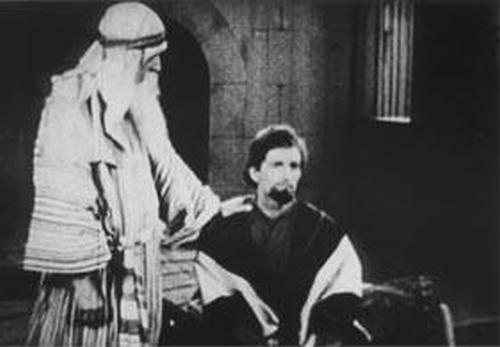
______________
Take the 5:10 to Dreamland (1976)
‘The filmmaker Jonas Mekas, a contemporary of Bruce Conner, once said, “The state produced by a film like 5:10 TO DREAMLAND is very similar to the feeling produced by a poem. The images, their mysterious relationships, the rhythm, and the connections impress themselves upon the unconscious. The film ends, like a poem ends, almost like a puff, like nothing. And you sit there, in silence, letting it all sink deeper, and then you stand up and you know that it was very, very good.” A sense of loss and longing associated with childhood memories permeates this short film, set to an elegiac electronic score composed for the work by Patrick Gleeson. The “5:10” of the title might refer to a train or bus schedule, but it also corresponds to the exact length of the film—a short ride that nonetheless takes the viewer effortlessly and evocatively across time and space to an American “dreamland” somewhere in the Midwest.’ — SFMoMA
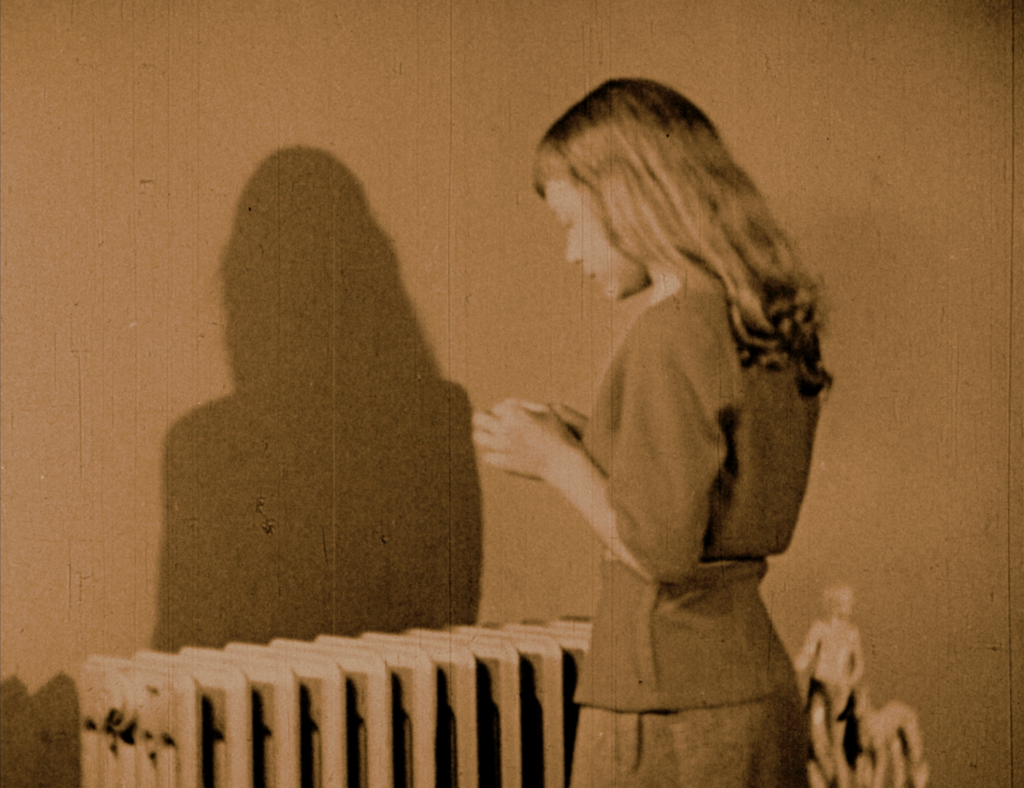
______________
Valse Triste (1977)
‘Valse Triste is a homage to surrealist cinema and a belated trance-film (the psychodramas of Maya Deren, Kenneth Anger and Sidney Peterson date from the 1940s, the time of Conner’s adolescence and this film’s footage). It also reworks the debased popular ‘dream sequence’, principally by imitating one of its cliche-prone situations—a boy’s dream about steam engines, daily chores, home travel and girls. Shorn of context, ordinary images keep their typicality but gain uniqueness, mystery and the aura of memory; a paperboy cycles down a street, a couple in overcoats enter a taxi, cars crawl down long roads, a man and a boy build a bonfire, a family pose by their farm. This material is renewed, or redeemed, by stripping it of sentimentality and information.’ — Michelle Silva
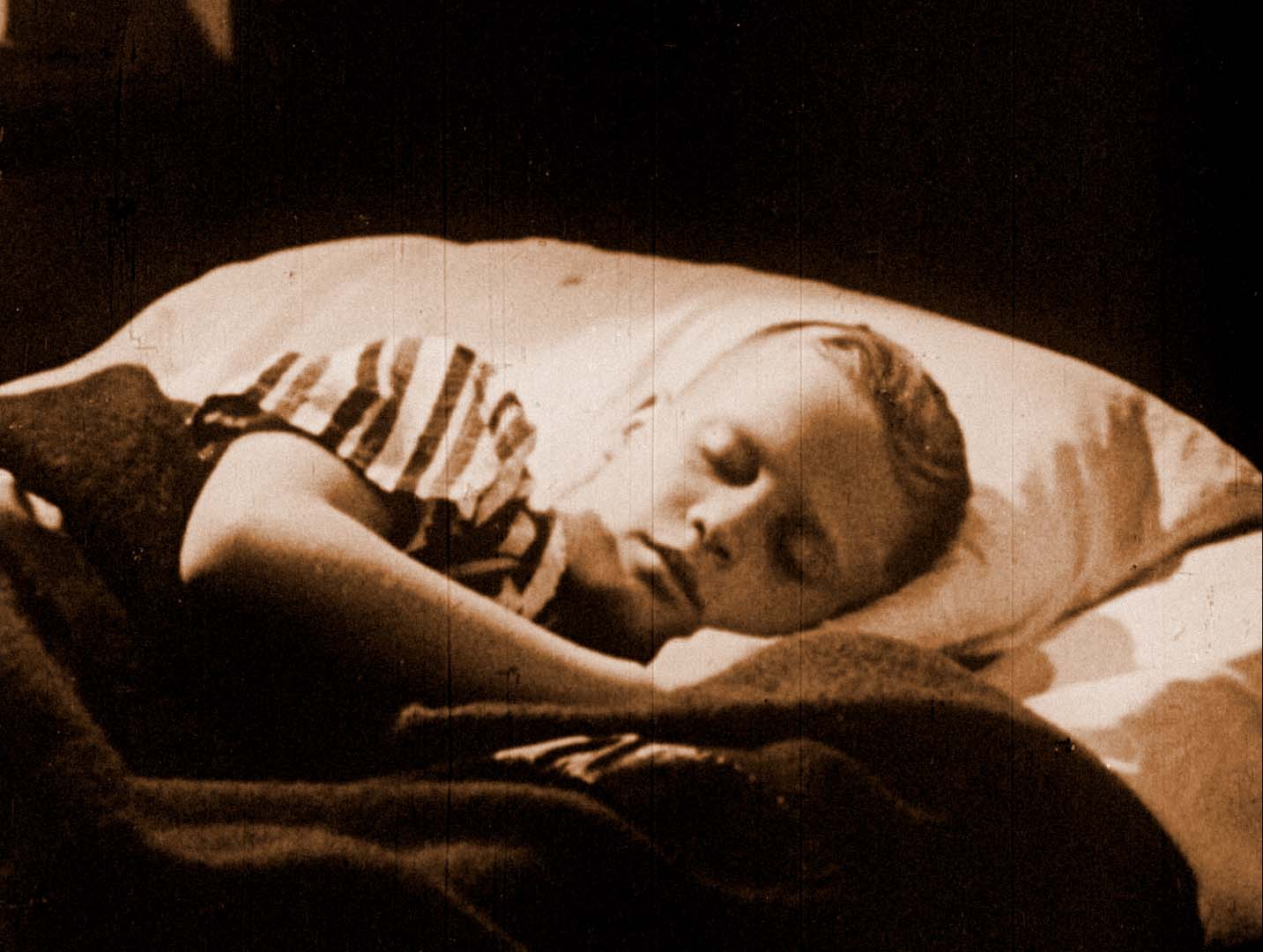
______________
Devo: Mongoloid (1978)
‘It may have been an unusual sight—an elder statesmen from the Beat Generation slam dancing with teenagers. But punk invigorated Bruce Conner. For MONGOLOID (1978), the short film Conner began preparing after seeing Devo on their first tour, Conner spliced together newsreel, educational, and b-movie footage which resonated with their satirical lyrics about an underdeveloped man-child who is determined to contribute to mainstream American society.’ — Michelle Silva
Excerpts & discussion
_______________
Mea Culpa – Brian Eno & David Byrne (1981)
‘In his first collaboration with David Byrne and Brian Eno, Conner used footage from educational films to create a rhythmically austere image-track for music from their pioneering “sampling” album My Life in the Bush of Ghosts (1981).’ — Michelle Silva
________________
America Is Waiting – Brian Eno and David Byrne (1981)
‘The lyrics of AMERICA IS WAITING: ‘Well now, you can’t blame the people – blame the government! Take it in again! Again! Again! America is waiting for a message of some kind or another,’ cued Conner for a strongly structured and richly varied piece which examines ideas of loyalty, power, patriotism and paranoia. Like most of Bruce Conner’s films, repeated viewings yield deeper layers of successive structures. AMERICA IS WAITING is strongly composed of interlocking visual connections, emblematic content and a resonating ambiguity of the human condition within the constructs with which we confound ourselves.’ — Anthony Reveaux
________________
Television Assassination (1995)
‘TELEVISION ASSASSINATION is one of two major works that Bruce Conner began in the days immediately following the Kennedy assassination and the artist’s own thirtieth birthday, in the fall of 1963. While REPORT utilized montage and a strongly articulated structure to analyze the forces at work in the killing of a President (including our own complicity), TELEVISION ASSASSINATION is a complex, synthesizing work that weaves together fragments from the flux and flow of that history as it was in the process of being constructed and displayed daily to a nation of spectators. A monument to the enduring potency of the Kennedy myth and to the marketers who created it, the installation brings Conner’s critique full-circle into the very medium that formalized it. In so doing, the work seems to suggest that the final resting place for the slain President was neither Brookline nor Arlington National Cemetery, but rather in the box, on the tube, held suspended forever on the television screen.’ — dailymotion
Trailer
______________
Three Screen Ray (2006)
‘THREE SCREEN RAY (2006) is a reimagined and expanded version of his seminal COSMIC RAY (1961), a literal cinematic slot machine where three reels of images meet and diverge and meet again. Influenced as much by the methodologies of assemblage as the kineticism of abstract expressionism, Conner cuts together images of sex, war, dancing, and cinema itself, before abrading and abusing the reel. The result is an explosive collage and a reflexive comment on the power of film and media.’ — MoCA
Excerpts & discussion
*
p.s. Hey. ** michael karo, Hi, Michael. Very nice to see you. And, yes, having Kevin’s great mind and voice grace the blog again feels wondrous. Take care, bud. ** Bernard Welt, Hi, B. My honor. Okay, now today is a definite !!!!!!!. I’ll see you a bit later, I think. ** David Ehrenstein, Hi, David. Not a day, yes, indeed. Thanks for answering Steve’s question. ** Tosh Berman, Hi. Thank you, and thanks to the beyond to Kevin. Paris was absolutely not built for what we just went through. No one I know here has AC, and my understanding is that even wealthy people in fancy homes don’t have it. Since, traditionally, Paris has only had a handful of hot (87 – 90 degree F) days a year, it has never been needed. ** _Black_Acrylic, Paris is miraculously rainy and positively chilly today. It’s like the second coming of Christ without the shitty part. I hope your monsoon is either dead beautiful or not a monsoon at all. ** Steve Erickson, Thanks. Mm, I would way that unless we get another heatwave on that level before summer ends — summer has traditionally ended in early August in France — people here will continue to live without AC for the time being. Our windows are not the sort that could be fitted with an AC unit without a ton of reconstruction of the windows themselves, and I am 100% sure this apartment’s owner would never pay for that. And I would rather tough it out for now, assuming the heat blasts continue to be a rarity. The hassle and expense of putting in AC for a few days of misery per year seems really extravagant. I don’t know Colectivo Los Ingravidos, no, but your description is very enticing, so I’ll go look through their works this weekend. Thanks a lot fo the tip and for the link! ** Misanthrope, Good, then take that good news as a probable all-clear sign and kick back. Yeek, the Wines household just sounds more like a reality show waiting to be filmed every day. I’d watch, and I don’t even watch. ** Bill, Hi. There is an SF gallery that I’m pretty sure is mentioned in the post that handles her work and probably has paintings by her in their back room or something. Let me know if Golia wowed or didn’t. Yes, the temperature has plunged. Only for a day or two, but I’m the outdoors’ worshipper for now. Have the best weekend! ** Okay. Some years ago on my murdered blog I did a Bruce Conner Day only to almost immediately receive an email from the Conner estate asking me to remove it, which I did. It having been a while, I have endeavored to make a new Bruce Conner Day, as you can see, and I am hoping that the years have mellowed the Conner estate and that the post will survive the weekend at least. If it suddenly disappears, you’ll know why. Please enjoy it while it lasts. I will see you on Monday.




 Now available in North America
Now available in North America 
Wonderful to see a Bruce Conner Day. A chapter of my “Film: The Frontline — 1984” (Arden Press) is devoted to Bruce Conner and in it it’s noted that he was then at work on a film about the singing group “The Soul-Stirrers” No idea what happened to that project. A crying shame so little of Conner is available on line. “Valse Triste” is a favorite of mine. But “A Movie” (which IS available) remains a Towering Masterpiece that explains what the cinema is all about.
So little is online because it is scrubbed from the internet as soon as it is found by the estate who are reflecting Bruce’s wishes. I wish Bruce had been more open to sharing his work.
Ah, I see the Herndon show Kevin was referring to was at Altman Siegel. Will try to stop by in a few weeks, after my trip.
Wow, I didn’t hear about the problems with the Conner estate. I’ve only seen a few of the films. Did the big retrospective at SF MOMA travel to anywhere near you? I was quite obsessed with his drawings for months after seeing the show; time for a re-obsession.
Have a good cool weekend. Will report on Golia Monday.
Bill
That’s a shame about the Conner estate being so litigous, especially because his own films were based on footage from other films. Are they holding out for a call for Criterion?
I’m reviewing the new Sleater-Kinney album for Gay City News and got an advance stream a few days ago. After listening to it, I can understand why Janet Weiss left the band. By that, I don’t mean that it’s a bad album, but St. Vincent has a heavier hand than any producer S-K has worked with before. It basically sounds like the past 2 St. Vincent albums if Corin Tucker and Carrie Brownstein sang lead vocals and played guitar on them. I never expected Sleater-Kinney to use strings or close an album with a piano-based ballad, although I understand their desire to change their sound after 25 years. Still, it’s a predictable change away from guitars and towards keyboards and programmed beats that every popular indie rock band seems to be going through now.
I hope the weather’s settled down in Paris for the weekend!
Hey Dennis,
This day is perfect for me right now! I was looking for experimental films to watch with my friends over the weekend, and found your old “Experimental Film & Video @ Los Angeles” post, so we were screening a bunch of those yesterday. The “A Movie” Bruce Conner link on that one is broken, so this is perfect timing! Hopefully it lasts until tomorrow, haha.
Also, I haven’t had a chance to say it yet, but I’m really sorry about Kevin and Kerstin. It’s incredibly hard thing to go through, and I just wanted to send my condolences.
That’s interesting, that the “meta intricacies” of TML made you more interested in less obviously complex stuff. I feel like a book that presents as memoir must open up a ton of incredibly rich opportunities for that kind of thing. Like, a really good distraction tactic, making the gears invisible, if that makes sense. Are you thinking of any other books that do a similar thing while working on it?
Also, my friends and I are finally getting together a film club that specifically focuses on a sort of “scavenged films” vibe, which I think might sound like it would mostly include random kitchy/psychotronic stuff (which I’m sure we will screen a bit of), but everyone I’m making it with wants to play a lot of old/new experimental stuff. So we’re probably gonna frame the club as a place where you can watch stuff that you’re not really gonna be able to find / hear of easily elsewhere, wether that be because it’s old and lost, or because it’s new and non-commercial… and also make it a sort of communal space around the idea of “found” art, if that makes sense. We’re still figuring it out, and it will involve mixing a couple of meanings of the word “found”, but we think it’d be a good way to get people (specifically Bard students) to come out. So, even though Bruce Conner is pretty canonized (I think? Right?), it still might work for what we’re trying to do. So thanks again for the post!
How’s the heat today? Any plans for the week?
Hey Dennis,
This day is perfect for me right now! I was looking for experimental films to watch with my friends over the weekend, and found your old “Experimental Film & Video @ Los Angeles” post, so we were screening a bunch of those yesterday. The “A Movie” Bruce Conner link on that one is broken, so this is perfect timing! Hopefully it lasts until tomorrow, haha.
Also, I haven’t had a chance to say it yet, but I’m really sorry about Kevin and Kerstin. It’s incredibly hard thing to go through, and I just wanted to send my condolences.
That’s interesting, that the “meta intricacies” of TML made you more interested in less obviously complex stuff. I feel like a book that presents as memoir must open up a ton of incredibly rich opportunities for that kind of thing. Like, a really good distraction tactic, making the gears invisible, if that makes sense. Are you thinking of any other books that do a similar thing while working on it?
Also, my friends and I are finally getting together a film club that specifically focuses on a sort of “scavenged films” vibe, which I think might sound like it would mostly include random kitchy/psychotronic stuff (which I’m sure we will screen a bit of), but everyone I’m making it with wants to play a lot of old/new experimental stuff. So we’re probably gonna frame the club as a place where you can watch stuff that you’re not really gonna be able to find / hear of easily elsewhere, wether that be because it’s old and lost, or because it’s new and non-commercial… and also make it a sort of communal space around the idea of “found” art, if that makes sense. We’re still figuring it out, and it will involve mixing a couple of meanings of the word “found”, but we think it’d be a good way to get people (specifically Bard students) to come out. So, even though Bruce Conner is pretty canonized (I think? Right?), it still might work for what we’re trying to do. So thanks again for the post!
How’s the heat in Paris? It’s way nicer here, the last few days. Any plans for the week? Have a good one.
This looks like a cool thing, the artist Jeremy Deller has made a film about acid house and rave in the UK 1984-1992. It will screen on BBC4 in the UK on Friday but I’m certain it will then be available on other platforms for the international crowd in due course. The inside scoop is that he “teaches a captive audience of sixth-formers about the impact of rave culture. Acid house, he claims, resembled Marxism in how it let musicians and clubbers seize the means of production.” Going by the trailer, it seems essential. There’s an 3min artist interview about the doc here too.
Dennis, It’s neat when someone creates his or her own kind of genre, no?
Yeah, it’s one thing after another here. Lots of hilarity and lots of craziness. One day, we’re chasing an escaped hamster at 5:30 in the morning, and the next day, we’re running over fire hydrants. We never did find that fire hydrant, btw. God knows where it ended up.
Saw the new Tarantino film. I really liked it. The friend who went with me -the one who loves every trailer and movie she sees- said it was okay. Frankly, I think she only said that because she knew how much I was loving it. Oh, well. Not to be mean, but I think Tarantino had so many things going on in the movie -very subtle things- that she didn’t even get.
Hey Dennis – Great to see this Connor day return. Fingers crossed it stays up. I set aside some time to check the videos tomorrow morning.
I loved seeing Kevin’s day revived. And the Alain Tanner day as well. I think his films The Salamander and For Jonah… are held up in New Yorker video rights hell, which is why they aren’t available on dvd or streaming. A shame b/c it’s great work that deserves a wide audience. Need to watch some of his later films. Any particular gems from later in his career?
Glad to hear the TV show is continuing. That must be a huge relief after all the work that’s gone into it.
Saw the new Tarantino and enjoyed it. A few clumsy elements, but overall I thought it was smart and deeply layered. Wonder if you need to know some about ’60s tv culture and Manson history to really synch with it though. The reviews calling it hateful and regressive are totally beyond me. Does it open there soon?
Skype this Wednesday?